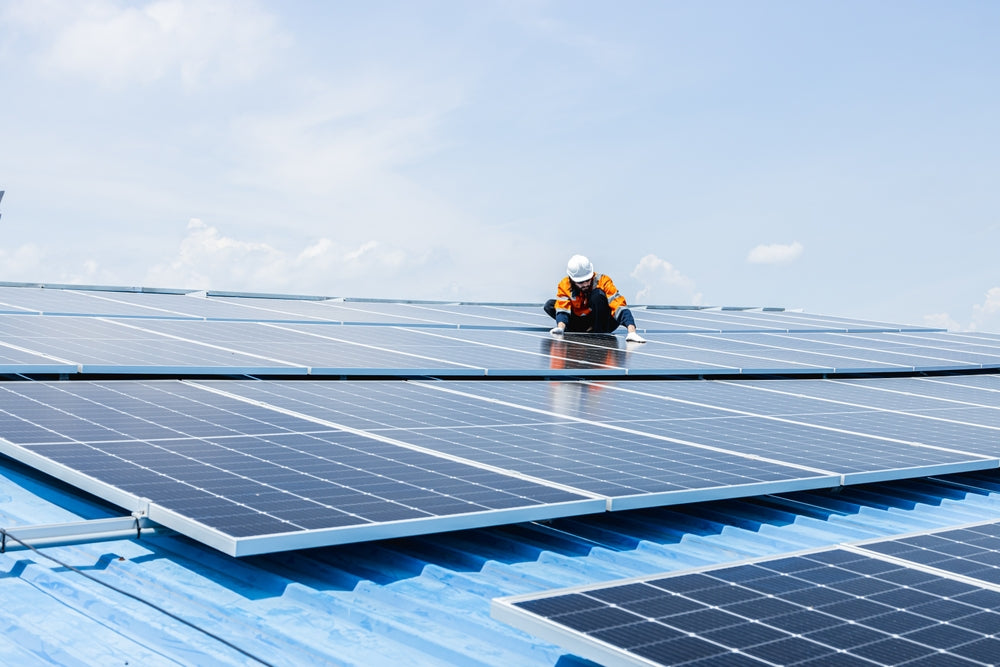
Understanding the Solar Panel Basics
Choosing the right solar panel can feel overwhelming, especially with all the technical terms floating around. But if you're thinking about going solar, there’s one key decision you’ll likely come across early on: monocrystalline vs. polycrystalline solar panels.
While both options serve the same purpose—capturing sunlight and turning it into electricity—they’re built differently, perform differently, and vary in cost. Whether you’re installing solar panels for your home, business, or farm, knowing the core differences between these two types can help you make a smart and informed decision.
Popular Panel Options: What's Common in the Market?
If you’ve browsed solar products in Pakistan or talked to local installers, you’ve probably heard names like Jinko solar panel, astroenergy solar panel, and newer technologies like bifacial solar panel systems. All these come in either monocrystalline or polycrystalline formats.
Monocrystalline solar panels are made from a single, pure crystal structure. They are known for their high efficiency, sleek black appearance, and better performance in hot or low-light conditions. On the other hand, polycrystalline solar panels are made from melted fragments of silicon crystals. They’re slightly less efficient but generally more affordable.
Manufacturers like Jinko solar panel and astroenergy solar panel offer both types, often tailored to the specific needs of residential or commercial setups. Bifacial technology—where panels generate energy from both sides—is more commonly paired with monocrystalline cells because of their higher output.
So if you're exploring solar panels, bifacial solar panel, Jinko solar panel, astroenergy solar panel, it's helpful to know whether you’re choosing mono or polycrystalline at the core. Let’s break it down further.
Appearance and Structure: Spot the Difference
The first thing you’ll notice between monocrystalline and polycrystalline panels is their appearance. Monocrystalline panels have a deep black or dark blue color with rounded edges on the cells. Their uniform look often blends better with rooftops, which is why they’re preferred in residential settings where aesthetics matter.
Polycrystalline panels, in contrast, have a speckled or marbled blue appearance. Their cells are square-shaped and slightly thicker, giving them a more traditional, patchy look. While they may not be as visually appealing, they still get the job done—and often for less money.
The difference in structure comes down to how the silicon is formed. Monocrystalline panels use high-purity silicon shaped into rods and sliced into wafers. Polycrystalline panels use silicon melted together from various fragments, resulting in a less uniform crystal structure.
Efficiency and Performance: Mono Leads the Way
When it comes to converting sunlight into electricity, monocrystalline panels are the clear winner. Their efficiency rates typically range from 19% to 22%, while polycrystalline panels fall between 15% and 17%.
What does this mean in practical terms? If you have limited space—like a small rooftop—monocrystalline panels will give you more energy per square foot. You’ll need fewer panels to generate the same amount of electricity, making them ideal for urban homes or compact solar installations.
In addition, monocrystalline panels perform better in low-light conditions and handle heat more effectively. Pakistan’s hot summers can reduce solar efficiency, so this performance edge is important. Panels from top brands like Jinko solar panel and astroenergy solar panel are often monocrystalline for this very reason.
If you're considering bifacial solar panel systems, monocrystalline technology is the preferred choice. It captures more light from both sides and delivers more consistent output across various lighting conditions.
Cost Comparison: Poly Offers Budget Flexibility
While monocrystalline panels clearly outperform polycrystalline in most categories, there’s one area where poly wins—price. Because of the simpler manufacturing process and lower silicon purity, polycrystalline panels are more affordable upfront.
For those on a tighter budget, especially in larger installations like solar farms or agricultural projects, poly panels can offer a good balance between cost and performance. You might need a bit more space to accommodate the extra panels required, but the savings can be significant.
That said, the price gap between mono and poly panels has narrowed in recent years. Brands like Jinko and Astroenergy have improved their manufacturing processes, making solar panels more accessible than ever before. So it's worth comparing both options based on long-term savings rather than just the initial price tag.
Durability and Lifespan: Which Lasts Longer?
Both monocrystalline and polycrystalline panels come with similar warranties, usually around 25 to 30 years. However, due to their purer structure, monocrystalline panels tend to degrade at a slower rate and maintain higher efficiency over time.
This durability makes monocrystalline panels a better long-term investment, particularly if you plan to stay in your home or use your system for several decades. They’re more resistant to environmental stressors and often come with better performance guarantees.
Polycrystalline panels, while still durable, may experience slightly more performance drop over the years. That doesn’t mean they’re unreliable—they’re still a solid choice for many—but monocrystalline panels hold their edge in terms of longevity.
Which Should You Choose?
Choosing between monocrystalline and polycrystalline solar panels depends on your specific goals, space, and budget.
Choose Monocrystalline If:
-
You have limited space and need maximum efficiency.
-
Aesthetics matter to you.
-
You're in a region with high temperatures or frequent cloudy days.
-
You want to future-proof your investment with longer-lasting panels.
-
You’re considering bifacial systems or advanced tech from Jinko solar panel or astroenergy solar panel.
Choose Polycrystalline If:
-
You have plenty of installation space.
-
You’re working within a tighter budget.
-
Your electricity needs are moderate.
-
You’re looking for reliable, lower-cost energy generation.
There’s no one-size-fits-all answer. Both types of panels can work effectively depending on the design and purpose of your system. The key is to balance performance with practicality.
Final Thoughts: Make an Informed Solar Choice
Switching to solar is one of the best decisions you can make—for the environment, your wallet, and future energy independence. But understanding the differences between monocrystalline and polycrystalline solar panels is crucial to getting the most out of your investment.
While monocrystalline solar panels lead in efficiency and long-term value, polycrystalline panels offer budget flexibility and are still a viable option for many households. As the market continues to grow in Pakistan, and as more people turn to brands like Jinko solar panel, astroenergy solar panel, and newer bifacial solar panel models, understanding your options puts you in control of your energy future.
So whether you're planning a rooftop system in Lahore or setting up a commercial installation in Karachi, take the time to evaluate both panel types. Consult a qualified solar installer, review your budget, and choose what works best for your needs.








